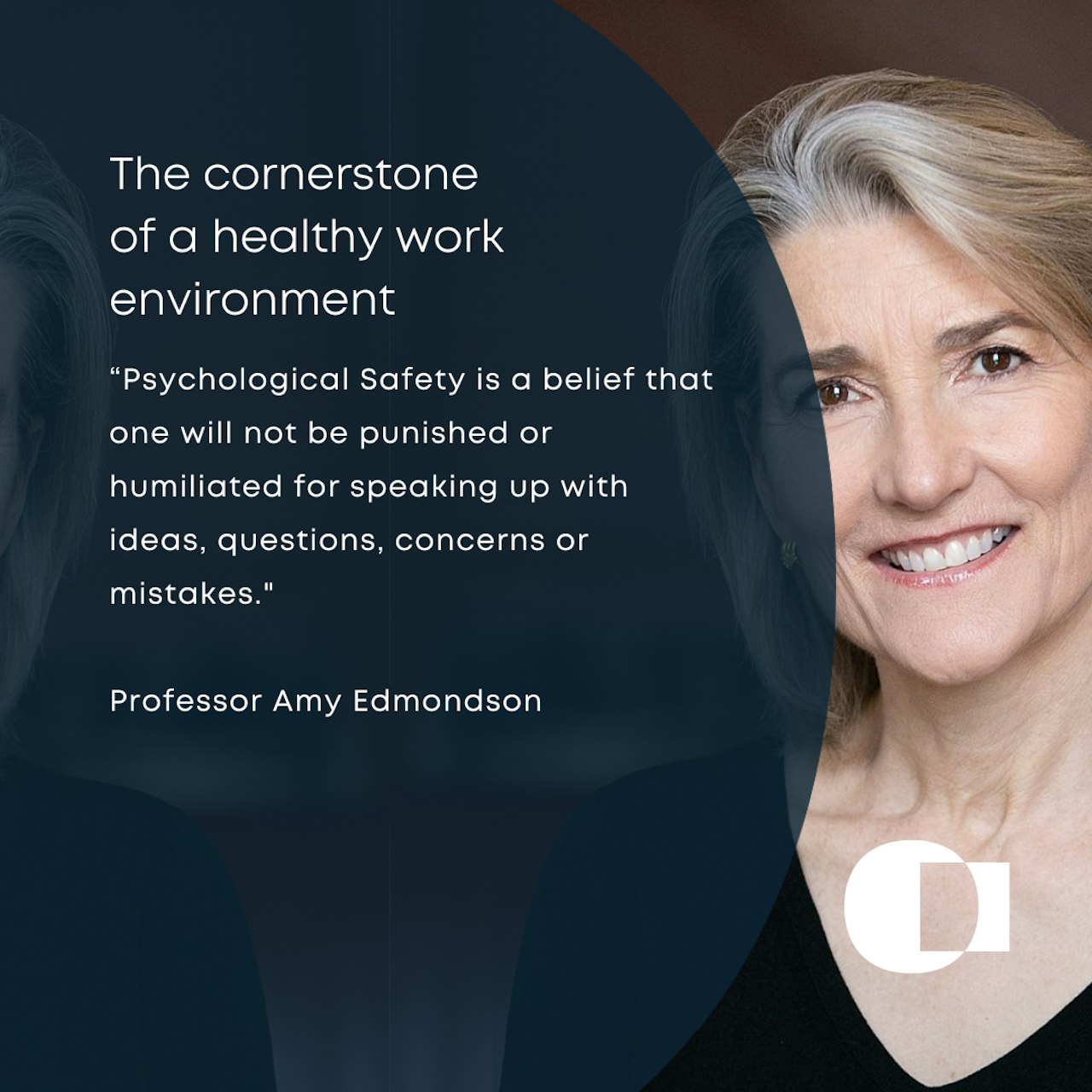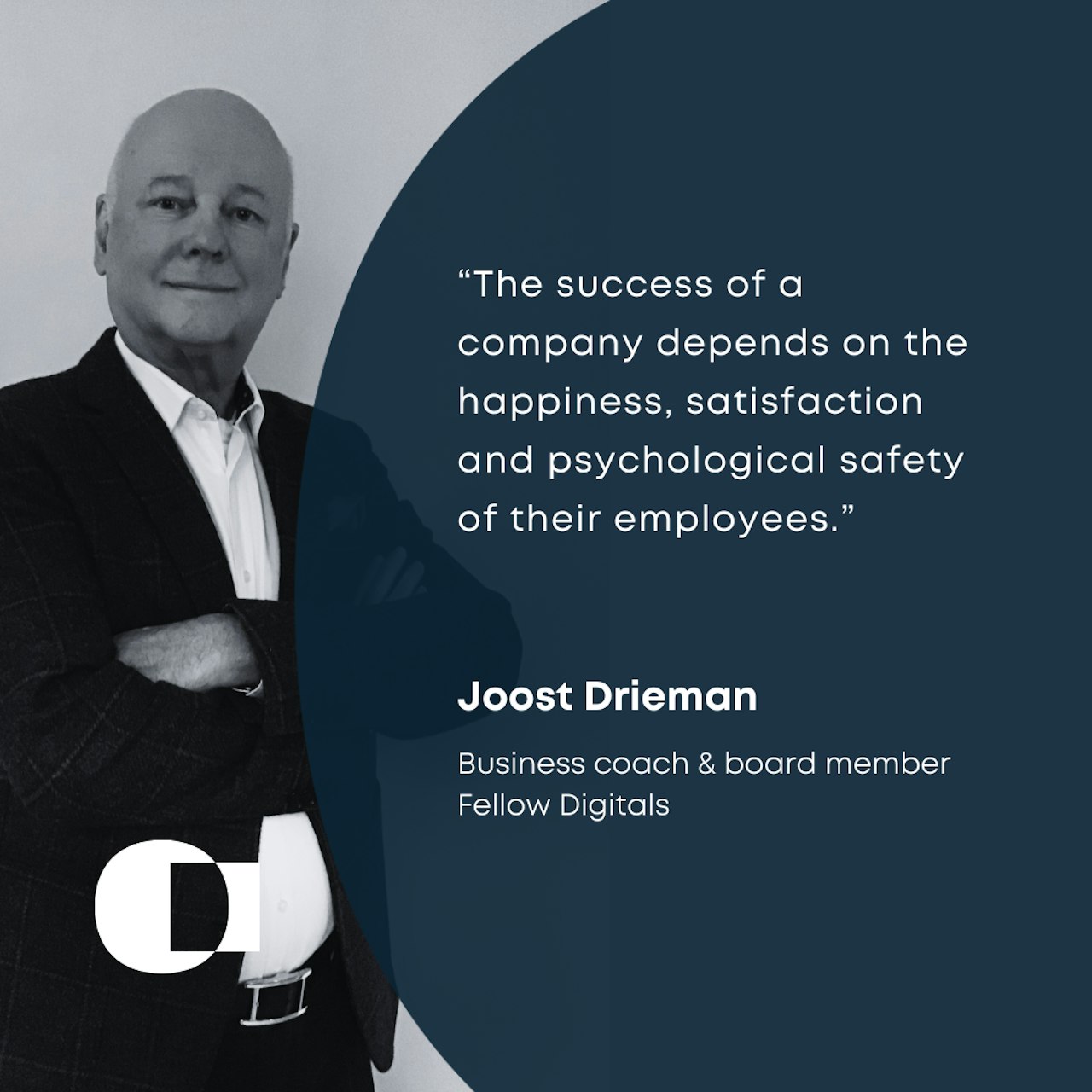Creating a safe space: Enhancing psychological safety for team success
Blog | workplace happiness

In our series "Building a Healthy Work Environment," Joost Drieman, an experienced senior certified coach and business advisor, shares over 35 years of expertise in guiding companies towards thriving work environments. In this episode, we're uncovering the key role of Psychological Safety in building a workplace where everyone can thrive. Join us as we explore practical tips and real-life examples to help leaders create an environment where trust, collaboration, and well-being flourish.
What does it take to create an exceptional team?
In my work as a coach and business advisor, a common question I encounter from clients is: "What does it take to create a truly exceptional team?" While many factors contribute to team success – including strong leadership, skilled individuals, effective communication, goal orientation, mutual support, and diversity – Google's groundbreaking research in 2015 uncovered a fundamental truth. Despite all these ingredients, one dynamic stood out as the most crucial: Psychological Safety.
Coined by Professor Amy Edmondson of Harvard, Psychological Safety is the cornerstone of a healthy work environment. It's the belief that team members can express ideas, ask questions, and voice concerns without fear of punishment or humiliation. In essence, Psychological Safety fosters an atmosphere where interpersonal risk-taking is not only accepted but encouraged. Without it, individuals may feel inhibited, stifling creativity, productivity, and collaboration.

Is your organization at Psychological Danger?
Psychological Safety extends beyond mere trust. It revolves around the collective belief in group norms, while trust is about individual perceptions. When individuals face Psychological Danger – such as criticism or humiliation – their brains react as if their lives are threatened, triggering a fight, flight, or freeze response.
To check whether your organization is seen as Psychological Danger or Safety ask yourself the following questions:
Do people feel comfortable in team meetings asking about things they do not know or they do not understand, or raise difficult issues?
What is the reaction of your team members when someone makes a critical mistake?
Do your team members give and receive honest feedback, including disagreements?
Are team members appreciated for their skills, talents and commitment?
Recognizing and valuing the unique personalities and skills of employees is crucial for fostering Psychological Safety, as individuals can experience it on different levels: being included, learning, contributing, and challenging.
How to Enhance Psychological Safety
Creating Psychological Safety requires proactive measures. Here are ten tips to enhance Psychological Safety within your team:
Show your team you’re engaged. Be present, pay attention and contribute.
Understand and care. Find out if your colleagues feel safe and be empathic.
Treat your team members is the way they want to be treated.
Focus on solutions instead of blaming someone.
Be a role model to show what you expect from the others.
Don’t allow negative behaviour and comments (about peers).
Welcome out of the box thinking, curiosity and innovation.
Consult your team members for decision making and explain the rationale when the decision has been taken.
Encourage feedback, questions, doubts and have your team members to challenge you.
Ask the team members to use their energy for effectiveness.
A good digital workspace is of critical importance. Having an intranet where employees can share ideas, work together, can learn from each other and exchange information is key to maximizing Psychological Safety.
Workplace scenario:
Sarah, a talented marketing executive, has been feeling increasingly stressed and overwhelmed by her workload. Despite her dedication and hard work, she's struggling to keep up with the demands of her role. In team meetings, Sarah hesitates to speak up about her concerns, fearing judgment or criticism from her colleagues and superiors. As a result, her stress levels continue to rise, impacting her performance and well-being.
As Sarah's supervisor, Alex recognizes the signs of stress and burnout in Sarah. Instead of ignoring the situation or attributing it solely to Sarah's performance, Alex takes proactive steps to support and empower her.
Here's what Alex could do:
Show Empathy: Alex approaches Sarah with empathy and understanding, acknowledging the challenges she's facing and offering a listening ear.
Provide Support: Alex offers tangible support to alleviate Sarah’s workload, whether by reallocating tasks, providing additional resources, or offering assistance with prioritization.
Encourage Open Communication: Alex creates a safe space for Sarah to express her concerns and feelings without fear of judgment. In team meetings, Alex actively solicits Sarah's input and encourages her to share her ideas and perspectives.
Offer Guidance: Alex provides guidance and mentorship to help Sarah navigate through her challenges and develop effective coping strategies for managing stress.
Promote Work-Life Balance: Alex emphasizes the importance of work-life balance and encourages Sarah to take breaks, prioritize self-care, and seek support from colleagues or resources within the organization.
Lead by Example: Alex sets a positive example by practicing open communication, demonstrating vulnerability, and prioritizing employee well-being within the team.
By taking these proactive steps, Alex not only supports Sarah through a challenging time but also fosters a culture of Psychological Safety within the team. As a result, Sarah feels valued, supported, and empowered to thrive in her role, leading to improved performance and overall well-being for both Sarah and the team. And eventually making the company even more successful.
Conclusion
In today's fast-paced and dynamic work environment, fostering Psychological Safety is not just a nicety – it's a necessity. When individuals feel safe to express themselves and take risks, they become more engaged, innovative, and productive. By implementing strategies to enhance Psychological Safety, organizations can create a culture of trust, collaboration, and excellence, leading to greater success and fulfillment for all.

We love to share our knowledge with you
Related blogs



